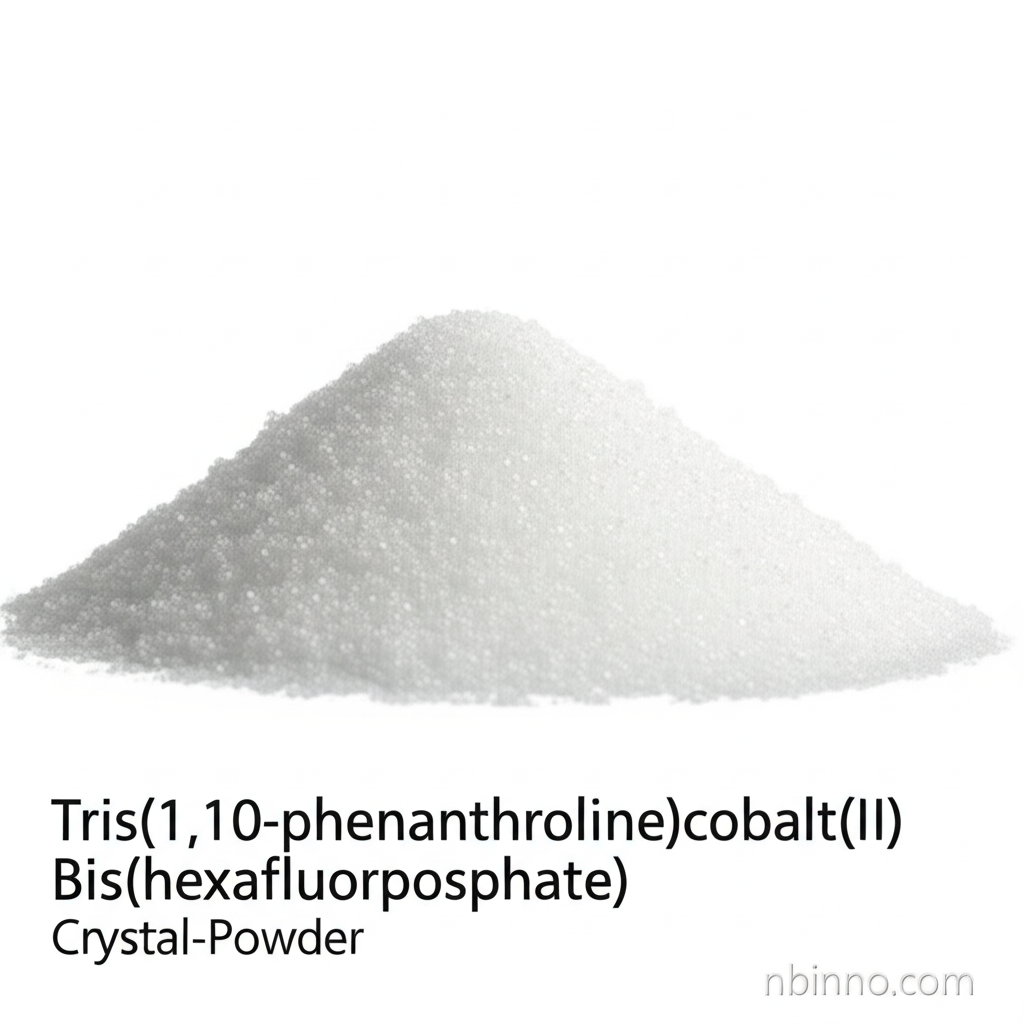Tris(1,10-phenanthroline)cobalt(II) Bis(hexafluorophosphate) for Advanced Solar Applications
Unlock higher efficiencies with this essential material for next-generation solar technologies.
Get a Quote & SampleProduct Core Value

Tris(1,10-phenanthroline)cobalt(II) Bis(hexafluorophosphate)
This high-purity chemical is a crucial component in the development of efficient solar energy conversion systems. Its unique electrochemical properties make it an ideal choice for Dye-Sensitized Solar Cells (DSSCs), serving as a vital redox mediator.
- Explore the benefits of using advanced solar energy materials like this for improved performance.
- Discover the potential of cobalt complexes for dye-sensitized solar cells in our detailed application notes.
- Ensure optimal storage with recommended conditions for maintaining the integrity of high purity hexafluorophosphate salts.
- Learn how this specialty chemical contributes to the efficiency of next-generation solar technologies.
Key Advantages
Enhanced DSSC Performance
Utilize this high-purity hexafluorophosphate salt as a critical redox mediator in dye-sensitized solar cells to significantly boost efficiency and photovoltage.
Reliable Chemical Properties
Benefit from the consistent quality and purity (97% Min.) of this cobalt complex, ensuring predictable results in your research and development.
Specialty Chemical for Innovation
Incorporate this advanced solar energy material into your projects to explore new frontiers in renewable energy conversion.
Key Applications
Dye-Sensitized Solar Cells (DSSCs)
This compound is a cornerstone for fabricating efficient DSSCs, acting as a redox couple that facilitates electron transfer.
Organic Chemistry Research
Its specific molecular structure and properties make it a valuable reagent for various organic synthesis and material science studies.
Renewable Energy Material Science
Investigate its role in advancing renewable energy technologies, particularly in photovoltaic applications beyond traditional silicon.
Electrochemical Studies
Serve as a key material for understanding redox reactions and developing new electrochemical devices.
